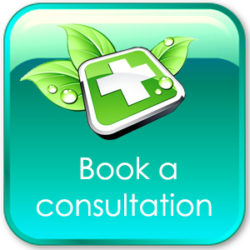Rice is one of the primary carbohydrate staples consumed around the world. It is also often touted in its whole ‘brown’ form to be a health food with higher nutritional value than its polished ‘white’ counterpart.
Research released in 2009 by the European Food Safety Authority however cast a rather dark shadow over consumption of rice based products, largely due to the finding that rice grown throughout the European Union contains high levels of the toxic metalloid arsenic. The concentration of arsenic was furthermore found to be in much higher concentrations in brown rice than white rice, due to the fact that arsenic tends to accumulate in the outer husk of the rice grain.
Why rice?
Rice is a food crop particularly susceptible to contamination with arsenic because of the way it is grown. The form of flooded paddy agriculture used for rice crops means that inorganic arsenic is released from soils and taken up by the plant far more readily than in other crops. Inorganic arsenic typically is deposited in soils from the use of pesticides and herbicides, and has an extraordinary long half life. Although inorganic arsenic-containing insecticides have been largely banned from use (but only recently), their residues are still found in high concentrations in previously treated soils. Due to this, organic certification will not necessarily guarantee that the rice product is free of inorganic arsenic as land only has to be free of the use of synthetic chemicals for 3 years before organic certification is given.
Those most at risk
These findings are concerning to say the least. Of most concern is the fact that rice based products are a common food source of babies and young children, either as rice porridge, crackers, or rice milk. As arsenic can cross the blood brain barrier, it demonstrates the ability to have profound effects on the neurological development of children. It can also cross the placenta, so pregnant women would be well advised to avoid the consumption of rice based products. Certainly I would suggest these groups avoid the consumption of brown rice (most rice based ‘health’ products such as crackers and rice milk are made from brown rice). Indeed, one of the primary recommendations of the European Food Safety Authority report was that children under 4 1/2 years avoid the consumption of rice milk altogether.
What are the alternatives?
On balance, organic white rice is probably your safest choice if you need to eat it. There are, however, many alternatives to rice that are more nutritious and far less likely to contain these types of toxicity. Both quinoa and amaranth are excellent substitutes for rice, and in my opinion taste much better as well. If you or your loved ones are intolerant to dairy, then consider almond or oat milk as a rice milk alternative (soy milk should be avoided due to many toxicity concerns as well as potential hormonal disruption).
How to safely remove arsenic from your body
Although chelation therapy is usually offered as the most comprehensive method of removing any heavy metal from your body, there may be a much cheaper and simpler option where arsenic is concerned. This study demonstrated the use of daily spirulina and zinc supplementation (500mg and 4mg respectively) showing a rapid increase in the elimination of arsenic in the treatment group as compared with placebo. I would caution anyone using this as a treatment option to use only high grade spirulina (I personally like the Hawaiian Pacifica brand), as spirulina itself can be prone to contamination with many toxins present in the ocean, including arsenic.
Finally, simply demonising rice as a sole contributor of carcinogenic arsenic would be misleading – in many areas tap water also contains significant levels of inorganic arsenic, and most vegetables will also contain some level of it (although in much lower quantities that typically found in rice).
Making informed choices in the foods you and your family eat is the best way to protect against inadvertent consumption of dangerous compounds and chemicals in this increasingly toxic world. I hope this contributes in some small way to helping you achieve that goal.
In wellness,
James



